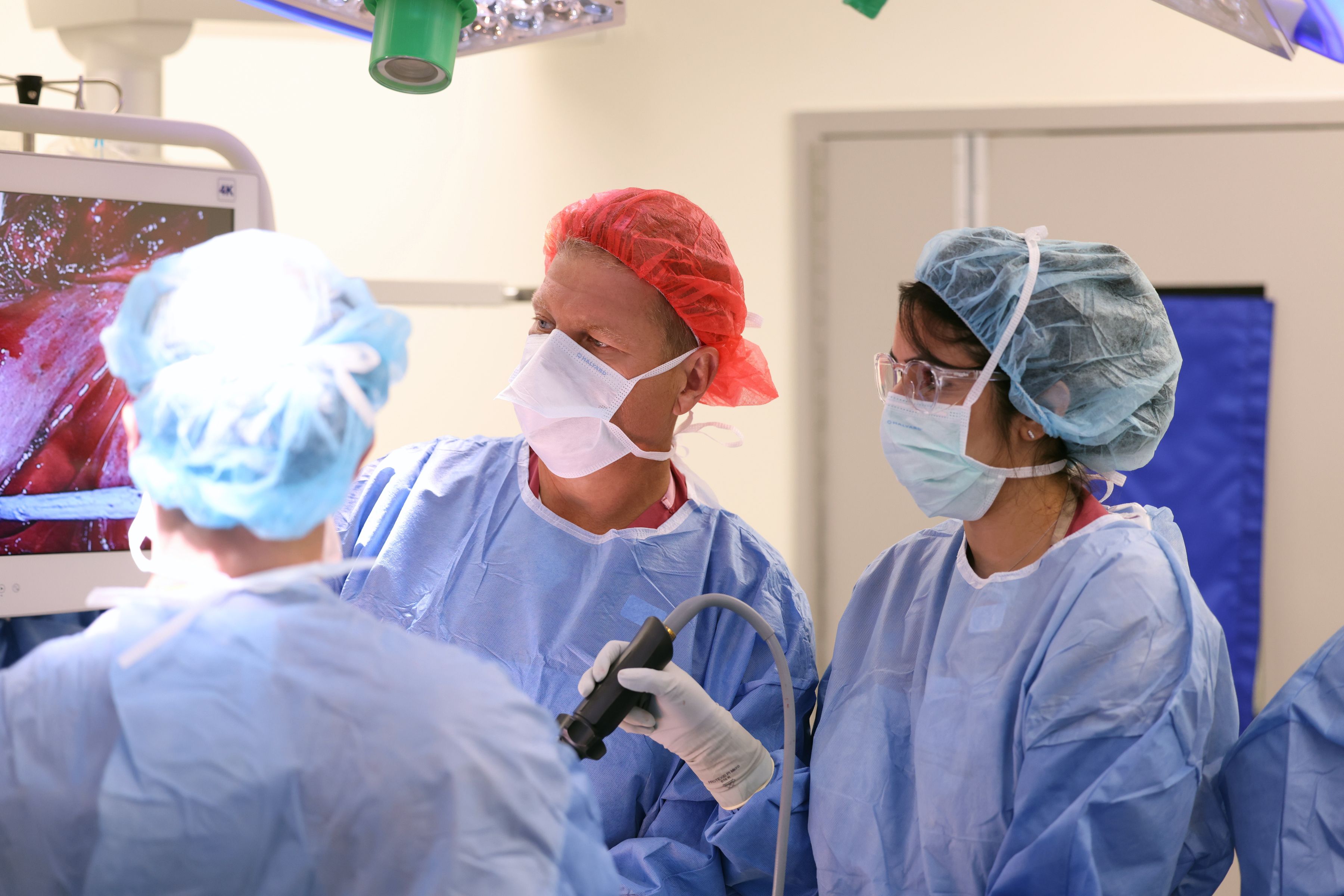
Hyperhidrosis, or over-perspiration, is caused by excessive secretion of the sweat glands. This disorder affects a small but significant proportion of young people all over the world. Hyperhidrosis is often a debilitating condition: patients suffer from social embarrassment at work or school associated with excessive hand, underarm, or facial sweating. Simple tasks such as shaking someone's hands or reading a book can be a cause for embarrassment. The cause of the sweating is believed to be over stimulation of the sympathetic nerves that supply the offending sweat glands.
Medical therapies can help some patients with hyperhidrosis, but their benefits are temporary. Thoracic surgeons at Weill Cornell Medicine|NewYork-Presbyterian are able to successfully treat hyperhidrosis in a minimally invasive procedure called "endoscopic thoracic sympathectomy (ETS)," which permanently relieves the nerve overstimulation that causes hyperhidrosis. Most patients are able to leave the hospital the same day as the procedure.
Our surgeons have improved the quality of lives of many patients suffering from hyperhidrosis. Over 95 percent of patients experience immediate and dramatic relief following ETS. Ordinary social interactions such as hand shaking are no longer embarrassing or anxiety-provoking.
Types of Hyperhidrosis We Treat
Weill Cornell Medicine surgeons treat the following types of hyperhidrosis:
Palmar
Palmar (hand) sweating is the most common complaint in patients with hyperhidrosis. Some patients have plantar (feet) sweating as well. Over 95 percent of patients treated with ETS report that their excessive hand sweating is completely eliminated.
Axillary
For excessive sweating in the axillae (underarms), ETS is indicated when medical therapies (Drysol, Drionics®, beta-blockers, Botox® injections, and anticholinergic drugs) fail to relieve symptoms.
Facial Blushing
Some patients have embarrassing blushing of the face and neck during stressful social situations. Patients with facial blushing may benefit from ETS, though there is greater risk of experiencing sweating elsewhere in the body after ETS than there is for patients who undergo ETS for palmer and axillary sweating.
The ETS procedure takes about 15 minutes, and both sides are completed in the operation. Patients are usually able to leave the hospital a few hours later. Most patients return to full work and full activity within a week.







